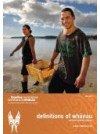The purpose of this review is to inform the Families Commission’s Whānau Strategic Framework 2009–2012. Selected literature has been reviewed which examines definitions of whānau and which considers applications of the construct of whānau ora.
Government and whānau development priorities
Whānau development priorities have been explored inside Māori cultural processes (Marsden, 1981) and outside of them, in the policy frameworks and practices of various government agencies. This literature is framed according to insider (whānau) and outsider (government) views about what constitutes whānau and whānau development priorities.
The national Whānau Wellbeing and Development Conference (2005) drew a distinction between the role of whānau, hapū, iwi and Māori communities in orchestrating their own development and the various roles of the state, and other external contributors, in supporting, and in some cases, resourcing, that development. Te Puni Kōkiri research to date demonstrates that a government agency can take a supportive role in facilitating and resourcing whänau development without necessarily directing or leading it. The heart of the issue is that whānau want to be able to determine how they will identify themselves and what their priorities are for their own development which do not always align with the views of government (Te Puni Kōkiri, 2005).
Kaupapa Māori Theory
The theoretical position underpinning this paper is Kaupapa Māori (Smith, 1992, 1995). Kaupapa Māori Theory is action oriented, accepts the validity of Māori values and processes, and is defined as ‘the philosophy and practice of being Māori’ (Mahuika, 2008, p. 4). In practical terms this acknowledges the importance of honouring whakapapa and tikanga, Māori ways of being in the world.
Smith (2000) states “there is more to kaupapa Māori than our own history under colonialism or our desires to restore Rangatiratanga. We have a different epistemological (the nature of knowledge) tradition that frames the way we see the world, the way we organise ourselves in it, the questions we ask and the solutions we seek” (p. 230). This is particularly relevant to understanding the differences in interpretation and application of the cultural construct of whānau.
Purpose
The purpose of this document is to inform the Families Commission’s Whānau Strategy 2009–2012. Selected literature has been reviewed which examines definitions of whānau and which considers applications of the construct of whānau ora. The two main bodies of literature are then integrated and linked back to provide evidential support for the Commission’s Whānau Ora Strategy 2009–2012.
The literature has been sourced from academic journal articles, historical narratives and oral histories; published research reports, policy statements and strategic plans; unpublished writing such as theses and reports and policies that have been provided to the Families Commission by the authors.
The majority of the literature sourced is available in the public domain. The unpublished material has been used with the permission of the authors.

